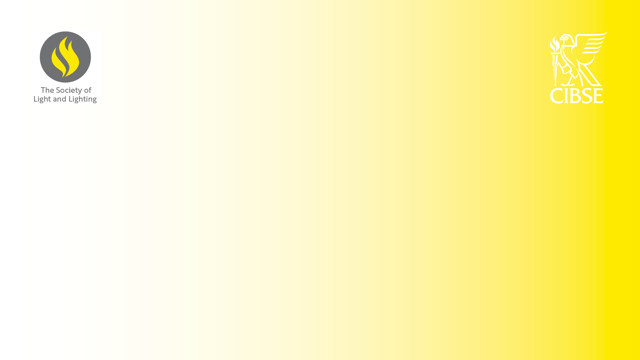
The SLL Code for Lighting establishes the fundamentals required by lighting designers and anyone responsible for the application of light and lighting within the built environment.
The 2022 update reflects the rapid development in lighting technologies and research. Advances in LED lighting technology over the last decade have seen it become the dominant light source. Amongst other developments, this has led to extensive lighting research around the non-visual effects of LED light, and the potential for artificial lighting to disrupt and/or support human circadian rhythms.
It is understood that lighting conditions can affect visual performance, and in some cases, cause visual discomfort. The dominance of LED lighting has contributed to discussions relating to lighting metrics, colour rendering, and the spectral content of LED light sources. The possibility that exposure to light can have significant effects on human health and functioning beyond the obvious visual effect implies another basis for lighting recommendations. However, more knowledge is required before non-visual effects can be applied with confidence, particularly about the effects on healthy people exposed to light by day.
Lighting is vital in the modern world, enabling the 24-hour society to exist. It is used for many different purposes, from enabling people to work accurately and safely, to visually enhancing our environment and improving accessibility and security.
The new edition of the Code considers the cost of lighting in relation to the health and wellbeing of an occupant and the environment. The recommendations included in the Code aim to strike a balance between the benefits and the costs. The basis of energy efficient lighting is to provide the right amount of light, in the right place, at the right time, with the right lighting equipment.
Split over twenty chapters, the Code covers definitions for the various units of measurement and the interrelationships between them; calculation methodologies for a range of applications; photometric data; colour metrics; and maintenance factors for LED light sources and luminaires.
Most lighting calculations are carried out using software tools based on the fundamental calculations that are listing within the Code for Lighting. The Code specifies the quantitative lighting requirements for a wide range of applications, along with guidance on how these might be achieved. By understanding these fundamentals, the designer, engineer, or facilities manager is equipped with the information they might need to verify automated calculations.
The Code sits alongside the SLL Lighting Handbook, which is more aligned to project-based lighting design, technology, and applications.lications.
Note: A corrigendum was issued on 25th July 2023 to make changes to chapters 3, 9 and 17. Purchasers of the hard copy can view the corrigendum here.
Please note: The PDF available for download has been updated accordingly.
Chapter 1: The balance of lighting
1.1 Lighting quality
1.2 The place of lighting in the modern world
1.3 Lighting and safety
1.4 Lighting costs
Chapter 2: Light and human performance
2.1 An overview of the effects of light on human performance
2.2 Lighting and visual task performance
2.3 Lighting and behaviour
2.4 Lighting and perception
Chapter 3: Indoor workplaces
3.1 Lighting design criteria
3.2 Schedule of lighting requirements
Chapter 4: Outdoor workplaces
4.1 Lighting design criteria
4.2 Schedule of lighting requirements
4.3 Verification procedures
Chapter 5: Road lighting
5.1 Introduction
5.2 Standards and guidance
5.3 Sustainability
5.4 Classification of roads
Chapter 6: Daylight
6.1 Introduction: why we need daylight in buildings
6.2 Daylight recommendations
6.3 Sunlight exposure
6.4 Glare
6.5 View
6.6 Integration with artificial lighting
Chapter 7: Energy and electric lighting
7.1 Simple guidance for energy efficient lighting
7.2 Energy regulations and standards
7.3 Optional certification schemes
Chapter 8: Construction (Design and Management) Regulations
8.1 Introduction
8.2 Client duties
8.3 Duties and roles
8.4 Duties relating to health and safety on construction sites
Chapter 9: Basic energy and light
9.1 Properties of electromagnetic waves
9.2 Evaluating energy as light
9.3 The non-visual impacts of light
Chapter 10: Luminous flux, intensity, illuminance, luminance and their interrelationships
10.1 Definitions of the units
10.2 Interrelationships between the units
Chapter 11: Direct lighting
11.1 Illuminance from point sources
11.2 Non-point sources
Chapter 12: Indirect lighting
12.1 Introduction
12.2 Sumpner’s method
12.3 Transfer factors
Chapter 13: Photometric datasheets
13.1 Photometric measurement
13.2 Elements of a datasheet
13.3 Calculations for datasheets
Chapter 14: Indoor lighting calculations
14.1 Introduction
14.2 The illumination vector
14.3 Cubic illuminance
14.4 Derived values
Chapter 15: Outdoor lighting calculations
15.1 Calculation of intensity towards a point
15.2 The reflective properties of road surfaces
15.3 Calculation of illuminance and luminance
15.4 Calculation of glare
15.5 Calculations in other outdoor areas
Chapter 16: Measurement of lighting installations and interpretation of results
16.1 Light measuring equipment
16.2 Field measurements
Chapter 17: Colour
17.1 Introduction
17.2 Colour properties of light sources
17.3 Colour rendering
17.4 Colour properties of surfaces
Chapter 18: Predicting maintenance factor
18.1 Determination of maintenance factor
18.2 Lamp lumen maintenance factor and lamp survival factor
18.3 Luminaire maintenance factor
18.4 Room surface maintenance factor (RSMF)
18.5 Ingress protection (IP) classes
Project manager and editor-in chief: Sophie Parry
Chapter authors and principal contributors: Allan Howard BEng (Hons) FLIP FSLL (Group Technical Director (Lighting), WSP) Professor Peter Raynham CEng MSc MCIBSE FILP FSLL (UCL Institute for Environmental Design and Engineering), Sophie Parry CEng MIET FSLL (Technical Applications and Education Consultant, Zumtobel Group Lighting), Peter Thorns CEng BSc (Hons) FCIBSE FSLL (Zumtobel Group Lighting), Ruth Kelly-Waskett PhD CEng MCIBSE FSLL (Hoare Lea LLP)
Contributors and reviewers: Professor Steve Fotios PhD CEng MEI MILP FSLL (University of Sheffield), Nigel Monaghan FSLL (Senior Lighting consultant, Luminous Solutions), Professor Peter Raynham CEng MSc MCIBSE FILP FSLL (UCL Institute for Environmental Design and Engineering Peter Thorns CEng BSc (Hons) FCIBSE FSLL (Zumtobel Group Lighting)